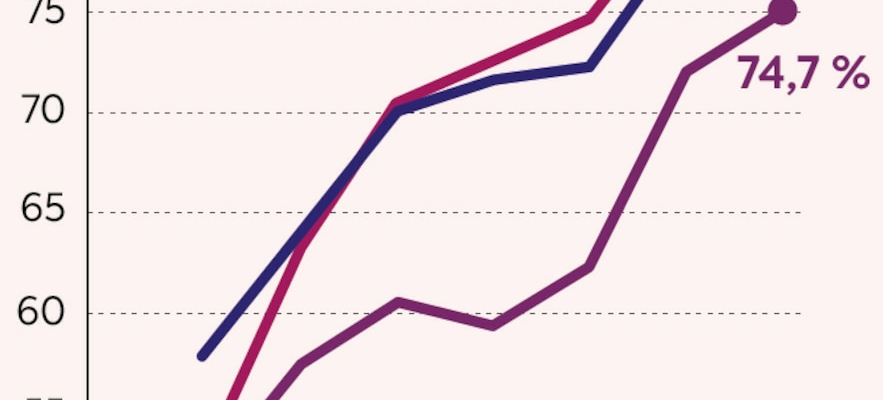Are smartphones and social media responsible for a real mental health crisis among adolescents? The question divides the scientific community. In 2017 in iGenJean Twenge, professor of psychology at the University of San Diego and specialist in differences between generations, was the first to warn of a link between “the worst mental health crisis in decades” in the United States and the advent smartphones. But the debate took on an international dimension with the publication in English of the bestseller Anxious generationpublished in English last year and now translated by Les Arènes.
Its author, Jonathan Haidt, is a famous social psychologist and professor at New York University. According to him, young people from Generation Z are the “guinea pigs of a completely new education”, marked by the advent of smartphones and social networks. A major change that he called “the Great Rewiring of childhood”. For the academic, the beginning of the 2010s marked a real turning point, with the widespread availability of phones like the iPhone with high-speed Internet, front cameras and Instagram, purchased by Facebook in 2012.
The turning point of the early 2010s.
© / The Express
For Jonathan Haidt, while mental health data remained stable in the 1990s and 2000s, the 2010s saw an alarming deterioration among young Americans. According to a survey conducted once a year by the United States government, cases of major depression have exploded, first among girls, then more attenuated and later among boys.
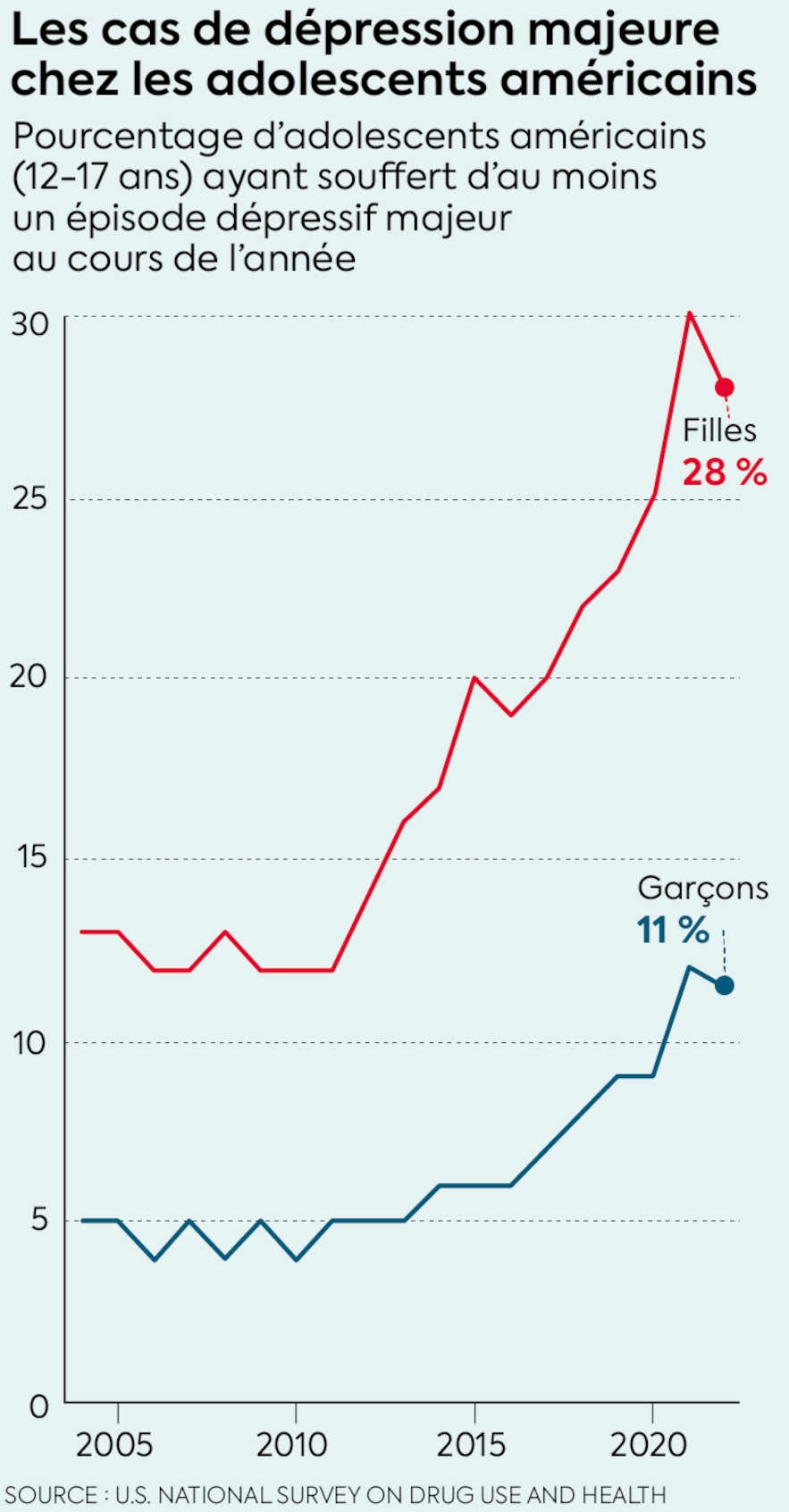
Cases of major depression among American adolescents.
© / The Express
Data on mental disorders among American undergraduates, collected by universities and compiled by the American Association for Student Health, show that it is primarily internalizing disorders, i.e. anxiety and depression, which have increased among young Generation Z.
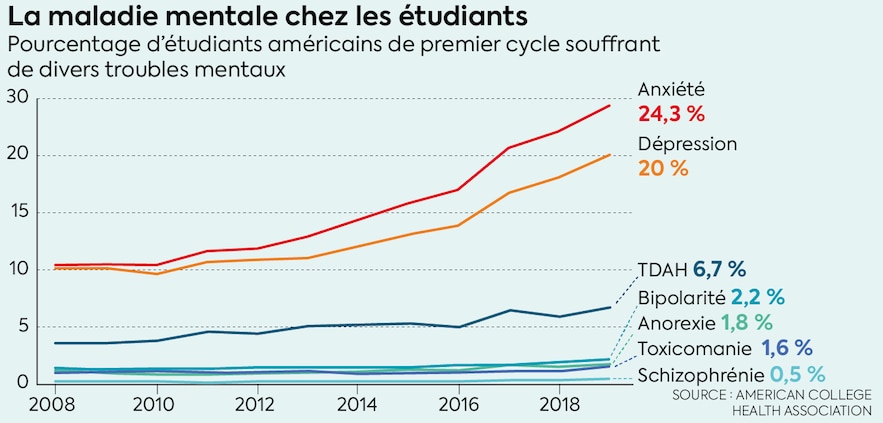
Mental illness among students.
© / The Express
Experts have considered that this data, based on self-reports, could reflect a moral panic, with young people perhaps more inclined to make self-diagnoses or to speak candidly about their symptoms. But the number of adolescents admitted each year to hospital or psychiatric emergency rooms because they deliberately harmed themselves has also sharply increased.
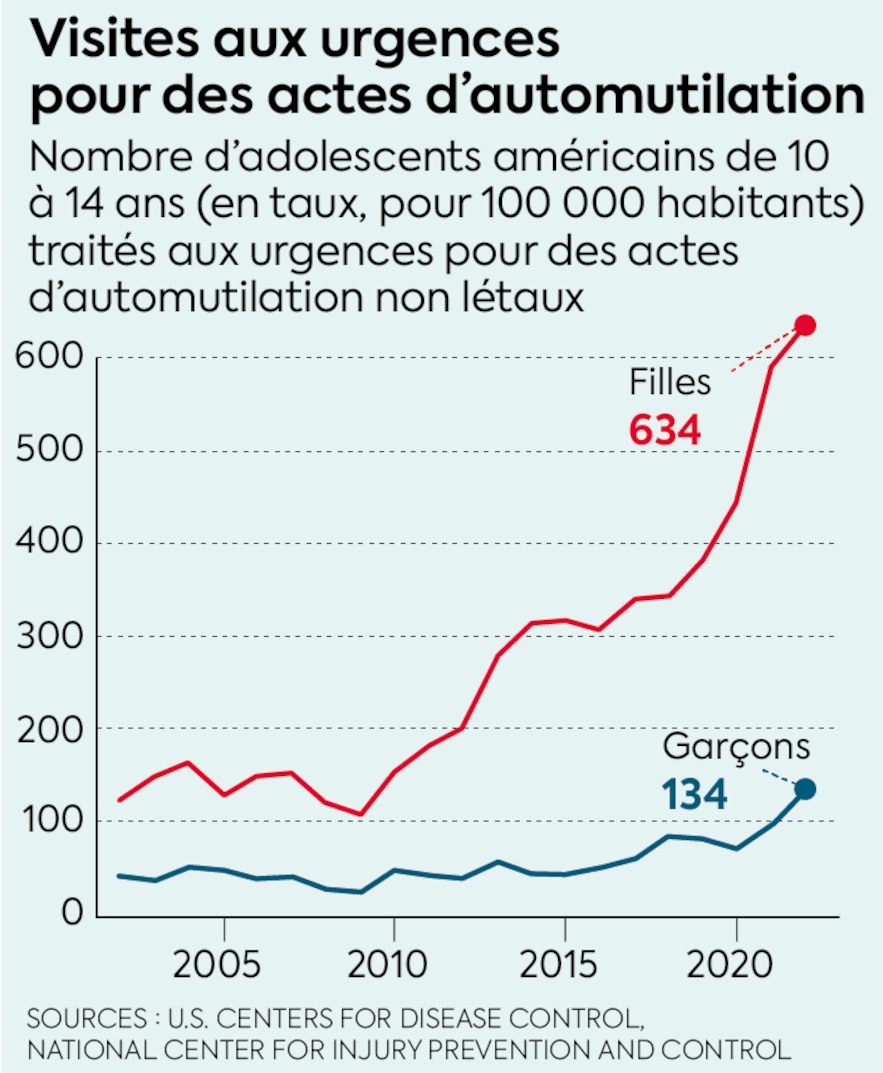
Emergency department visits for acts of self-harm.
© / The Express
Suicide rates among American adolescents began to increase in 2008, with a spike among girls in 2012.
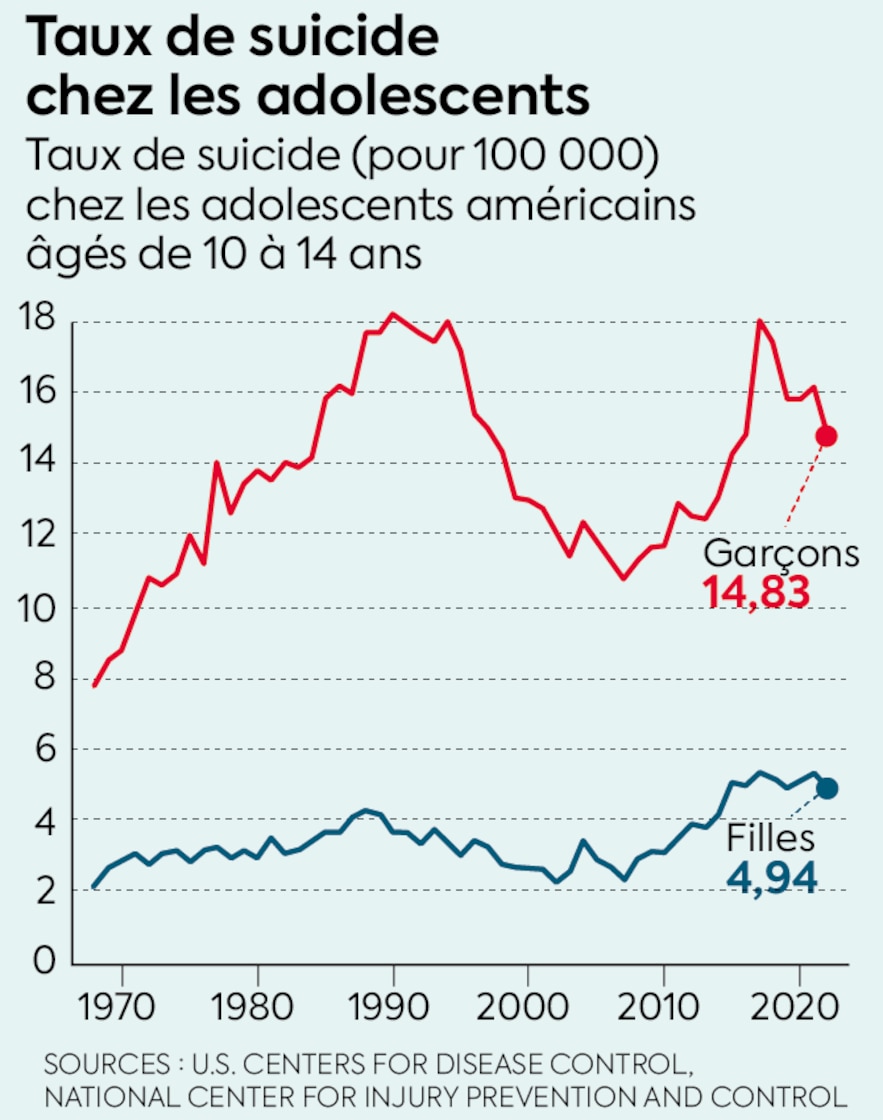
Teen suicide rates.
© / The Express
After a slow decline, the time spent chatting with friends in real life collapsed when smartphones replaced basic cell phones in the early 2010s.
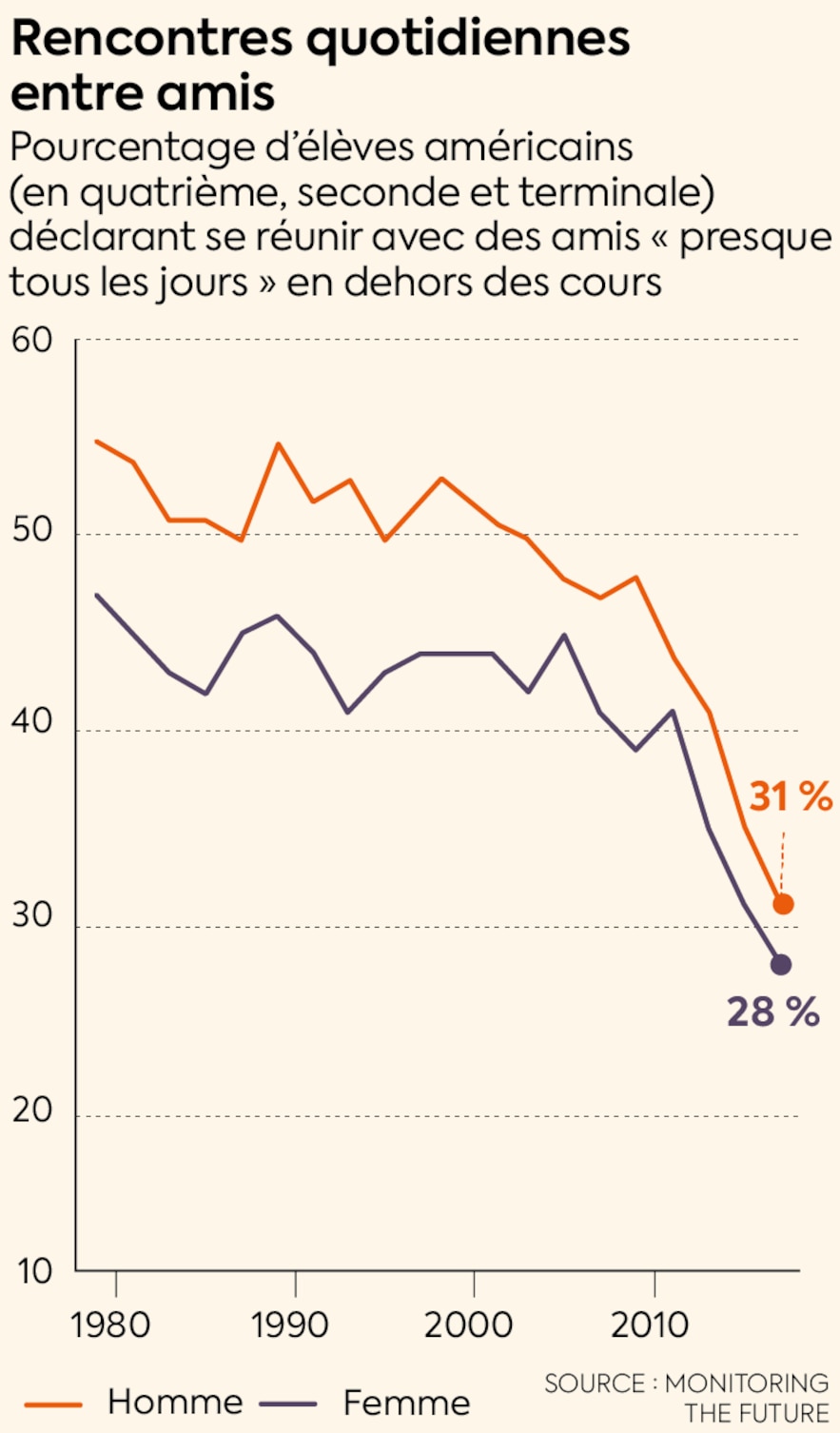
Daily meetings with friends.
© / The Express
Overprotected young people
For Jonathan Haidt, digital technology and networks like Instagram or TikTok are not the only ones responsible for this mental health crisis among young people. If young people are often left free with their phones, they are, on the other hand, according to the psychologist, overprotected by their parents in real life, while playing alone with each other is essential to their development, especially outside. “Young mammals are programmed to take risks. That’s how they overcome their childhood fears, and learn to assess danger. If you block that, you block their development. Children are lovers of thrills, they need to take risks without being supervised, so that they learn to manage them. By prohibiting them from playing freely in the name of their safety, we are preventing them from developing these skills,” warns. -he. Despite busier schedules and the mass integration of women into the labor market since the 1970s, parents, for example, devote much more time to their children than before.
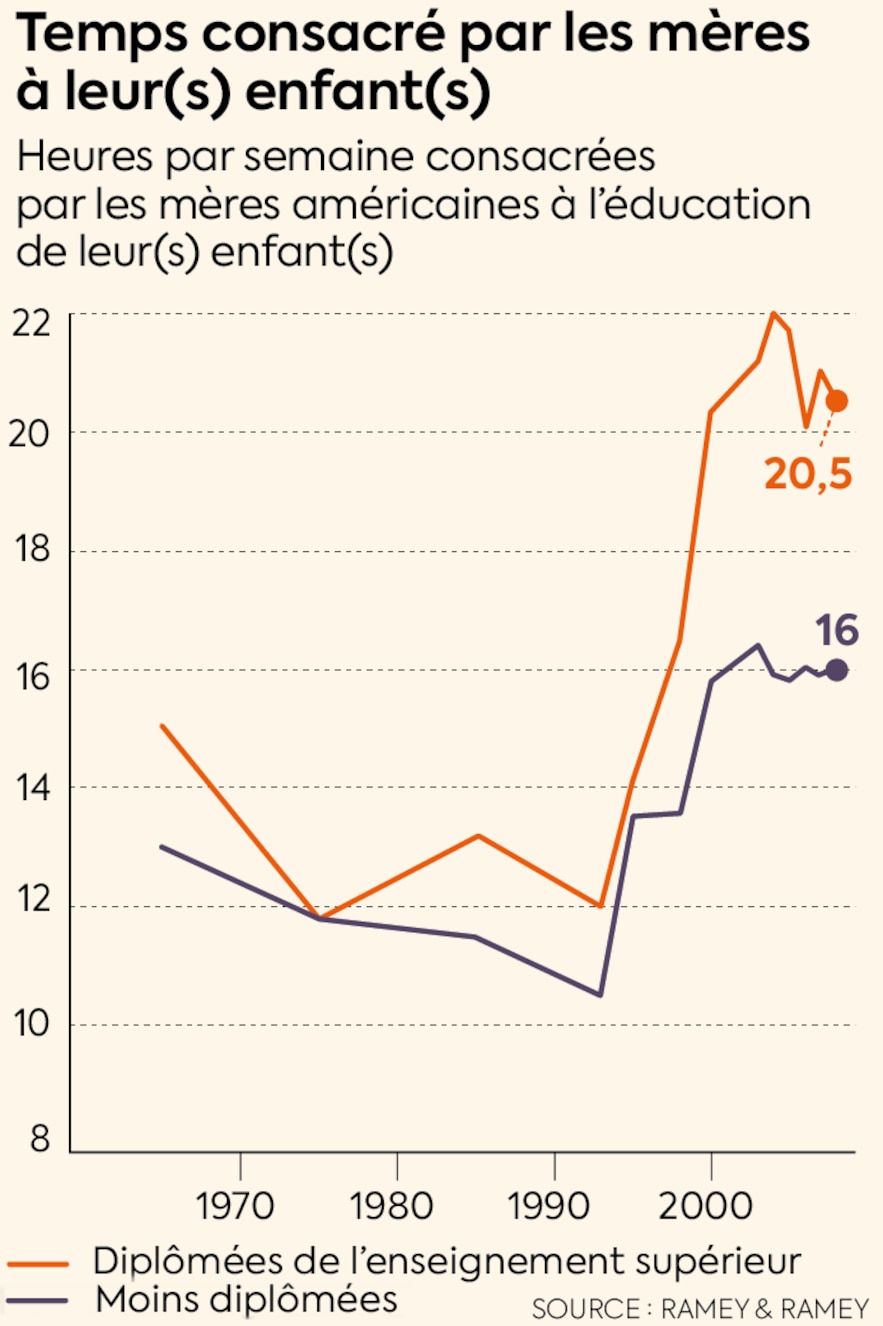
Time spent by mothers with their children.
© / The Express
Parental overprotection and precautionism intensified in the 1990s, limiting activities that require permission to go out without supervision. Young people have thus moved away from certain practices associated with a transition to adulthood. Data shows that the percentage of high school seniors in the United States who have obtained a driver’s license, drink alcohol, work for pay or have ever had sex are falling sharply.
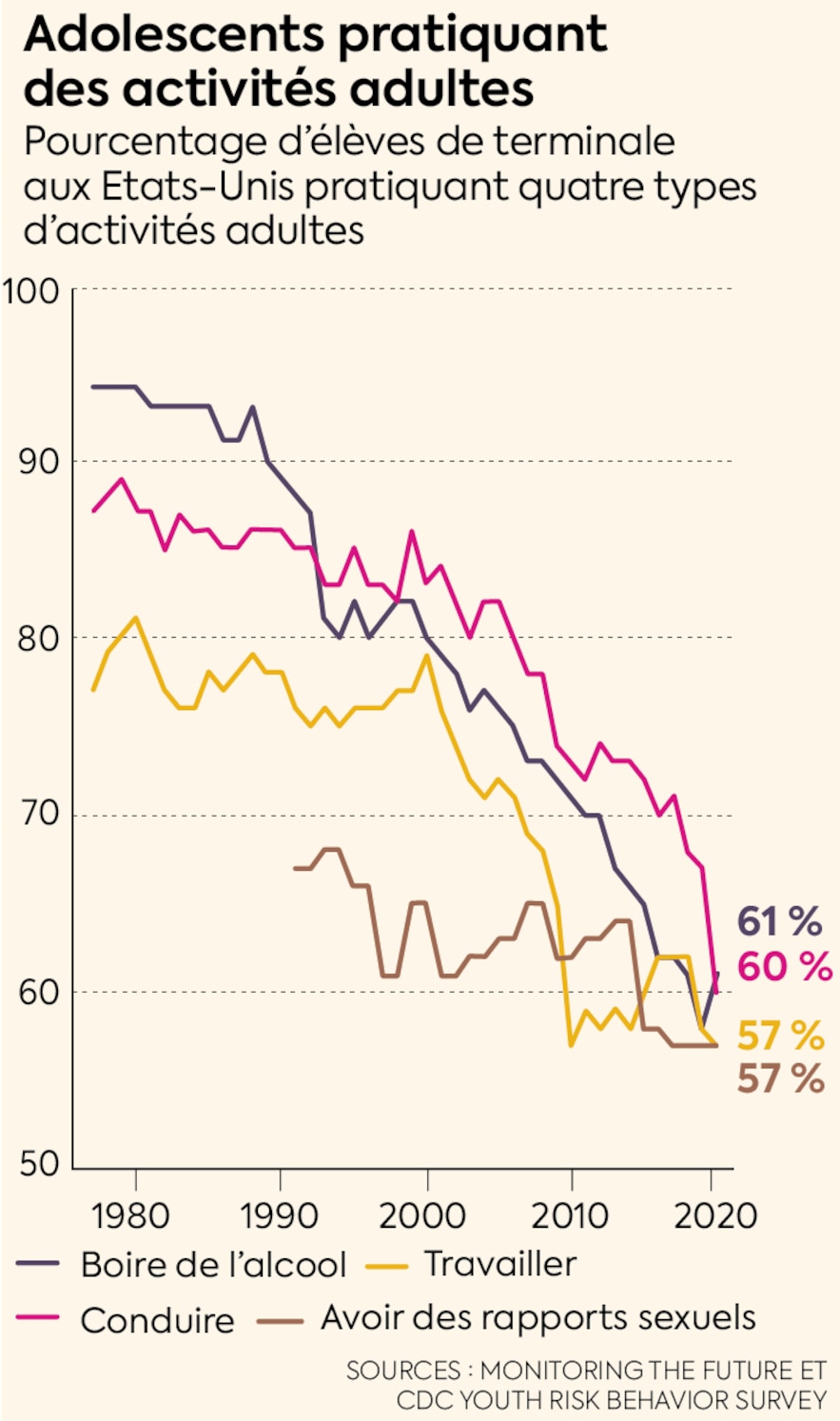
Adolescents practicing adult activities.
© / The Express
Following the publication of Anxious generationwhich has already sold more than a million copies, states have decided to follow Jonathan Haidt’s recommendations. Australia and Florida have just banned or restricted access to social networks for under-16s. But scientists, like psychologist Candice Odgers, criticize him for confusing correlation with causality. In L’Express, Séverine Erhel, researcher in cognitive psychology at Rennes 2 University, also believes that the causal link between smartphones and changes in suicide rates or symptoms of depression is currently not supported by the literature. scientist. For her, it is a “fallacious reasoning known as post hoc, ergo propter hoc : If suicide rates and smartphone use increase simultaneously, then smartphones would be the cause of suicides.
But according to Jonathan Haidt, if all new technologies (radio, television, video games, etc.) have in the past generated unjustified moral panics, the situation would be different today. “Previous moral panics were often pushed by media that relied on sensationalist stories that were either rare or false. Today, it’s the opposite. Almost everyone is seeing the effect of these new digital technologies on children, it was first of all the parents who observed the phenomenon first hand,” he assures. Above all, according to the academic, “never has a mental health crisis, measurable in an objective way, begun at the very moment when a new technology was spreading. In the case of smartphones and social networks, the concomitance is blatant around of the year 2012”.
